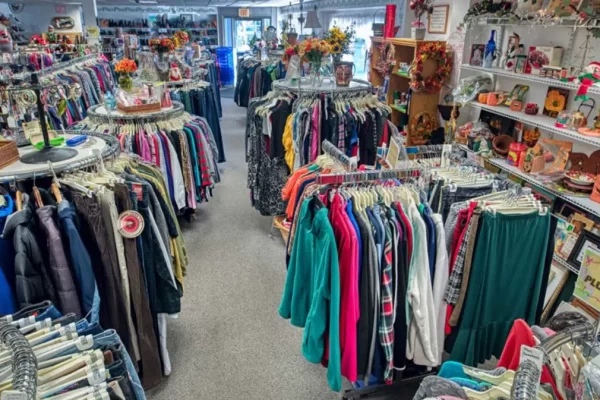There are a variety of ways to pay for goods and services today. Understanding which options work best for your business will help you keep customers happy and spending.
The 4 main methods of payment include cash, checks, credit cards, and electronic transfers. These options are all useful for different situations and can be a great way to boost your online sales.
- Cash
Cash is a very simple and widely-accepted method of payment, especially in retail stores. It’s reliable, requires no extra processing, and is easier to carry than credit cards or checks. However, it’s becoming less popular because of the growing dependability and convenience of electronic banking systems.
For businesses, cash is an important source of revenue, and it can help you focus on generating cash instead of spending money on operating expenses. You’ll want to make sure that you have enough cash on hand to pay your employees, vendors, and contractors as well as to fund capital expenditures and growth projects.
The term cash is also used in finance and accounting to describe current assets that are readily available for use or to be accessed immediately (money market instruments). A company’s cash account is comprised of its currency, coins, bank accounts, checks, and savings accounts.
A cash advance on a credit card can be a fast and convenient way to get cash, but it’s not for everyone. These loans come with high fees and interest rates, so it’s best to only use them in emergencies.
Rather than taking out a cash advance, try to get the money you need from friends and family members or sell items you no longer need to cover your emergency costs. You’ll avoid the fees and interest charges that come with a cash advance and save yourself money in the long run.
Another option is to get a cashier’s check from your bank, which will allow you to transfer money from your checking or savings account into the bank’s account. These cash advances usually include a fee, but they can be as low as a few cents or a small percentage of the amount advanced.
You can also use an ATM to get a cash advance on your credit card. These withdrawals will typically be subject to a small usage fee and can accrue interest at a higher rate than purchases.
In business, cash is the lifeblood of a company. It’s used to pay your employees, vendors, and suppliers as well as to fund capital expenditures and grow your business.
- Checks
Checks are one of the oldest methods of payment and have been used by people for hundreds of years. They are convenient and a good way to track your spending habits. But they also come with some drawbacks.
First of all, checks can be slow to process. It can take several days for a check to be processed and deposited into the account of the payee. In addition, they can be stolen and lost, which is why the FDIC advises consumers against using them as a primary method of payment.
There are many different types of checks, so it is important to understand which one is best for your needs. The most common type of check is a personal check, which is issued from your checking account and includes the amount of money you are requesting to be withdrawn, as well as your bank’s routing number and the payee’s name.
Another type of check is a business check, which is issued to businesses and serves as a form of billing. These are used to pay employees, contractors, and other organizations.
Finally, there are also certified checks and cashier’s checks. These are more advanced forms of payment and are often offered by banks when a buyer wants a guaranteed check.
The main advantage of checks is that they provide clear documentation that a bill has been paid. This helps protect your identity and reduces the chances of scams and other financial fraud. Plus, it’s more secure than cash or other digital methods of payment. That’s why a majority of small and medium-sized businesses still use checks to make and accept payments. However, with advances in technology and the rise of electronic options like PayPal and Venmo, check writing is slowly becoming less popular.
- Credit Cards
Credit cards are a popular form of payment used to make purchases from merchants. Compared to cash, credit cards offer convenience and the potential for lower interest rates. They also help avoid theft, reducing the likelihood of fraud and reducing the back office costs of processing checks and cash.
They are also important for establishing credit, as it’s much easier to build up a good credit history when you have a credit card. They also help you maintain a positive credit score, which can be useful when you need to borrow money in the future.
A credit card is a card issued by a bank that lets consumers borrow money and pay it back over time. The card can be used for making purchases from merchants who accept them or for taking out a cash advance.
Credit cards usually have a minimum balance that must be paid off each month or at the end of every statement cycle. If you don’t pay this amount, the bank will charge you a late fee. You also have to pay your monthly statement balance in full each billing cycle or it will cost you money in interest charges.
These payments are typically made in person, in a store, by telephone, or online through the Internet. They can be made with a physical card, digital wallet, or direct debit.
Depending on the credit card, there may be other fees associated with using it. These can include transaction fees, over-limit fees, or balance transfer fees. These can be avoided by using a checking account instead of your credit card.
The main benefit of using a credit card is that it allows you to borrow money without having to worry about securing an advance or paying your bills on time. In addition, many credit cards come with a variety of benefits and perks.
The most common types of credit cards are Visa, Mastercard, American Express, and Discover. Each of these credit cards has a different name and is tied to a revolving line of credit that the issuing bank has issued. The credit line can grow or shrink based on how much you use it and how often. If you have a large balance, the interest rate can be high.
- Electronic Transfers
There are many ways to pay for goods and services. Cash, checks, credit cards, and electronic transfers are among the most common methods of payment in the United States. Despite their popularity, all of these forms of payment have their pros and cons.
Traditionally, cash was the primary form of payment, but these days, technology is playing an increasing role in how people pay for their products and services. This includes using digital currencies like Apple Pay and Android Pay to buy goods and services, as well as using online payment apps to make quick and easy bank and other financial transactions.
EFT, or electronic funds transfer, is a type of transaction that moves money between accounts entirely digitally without any physical cash, checks, or bank employees involved. It is a relatively new form of electronic banking that is widely used and regulated by the Electronic Funds Transfer Act (EFTA).
A sender requests an EFT by sending a request through digital networks that then move it to their bank and to the receiver’s bank. Once it is sent, the payment network will hold it for a brief time while checking that everything is correct and valid before it is transferred to the recipient’s account.
After the payment network clears it, the receiver receives the money within a few days. The receiver can use it to purchase goods and services, pay bills, and even send money to friends and family.
This type of payment is especially popular for recurring payments, such as payroll direct deposits and recurring payments to utility companies for your monthly utilities and rent. It’s faster than paper check payments and is also easier for banks to process because they don’t have to track every transaction manually.
However, despite the advantages of digital payments, they are not immune to fraud. It is important to protect your PIN and only use the apps you trust to safely transfer your money. Always review your bank and credit card statements regularly to catch fraudulent transactions early. Lastly, avoid making electronic payments while you are under the influence of alcohol or drugs.





